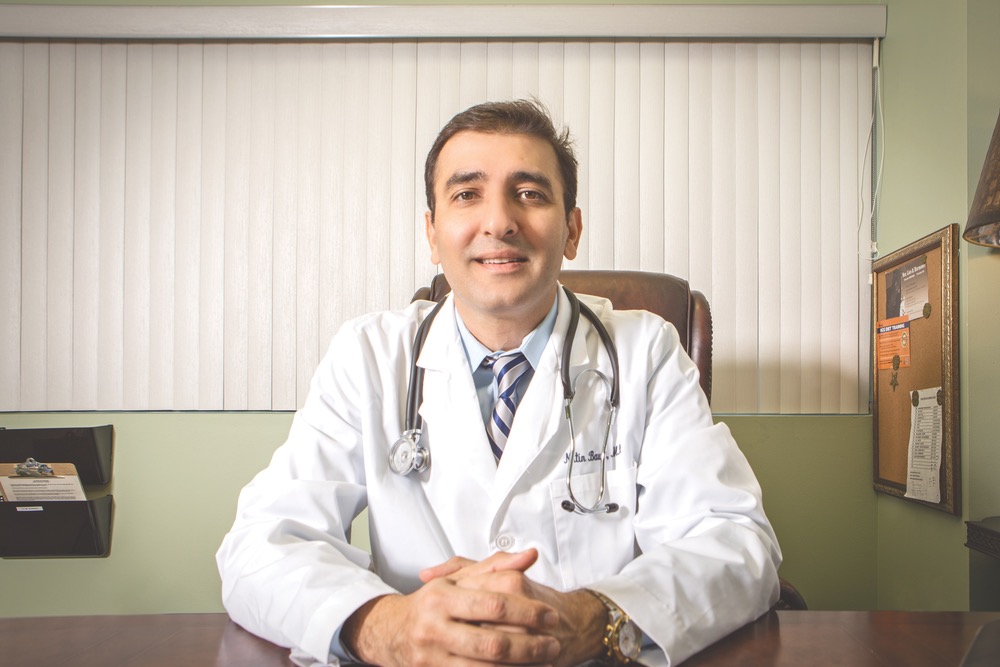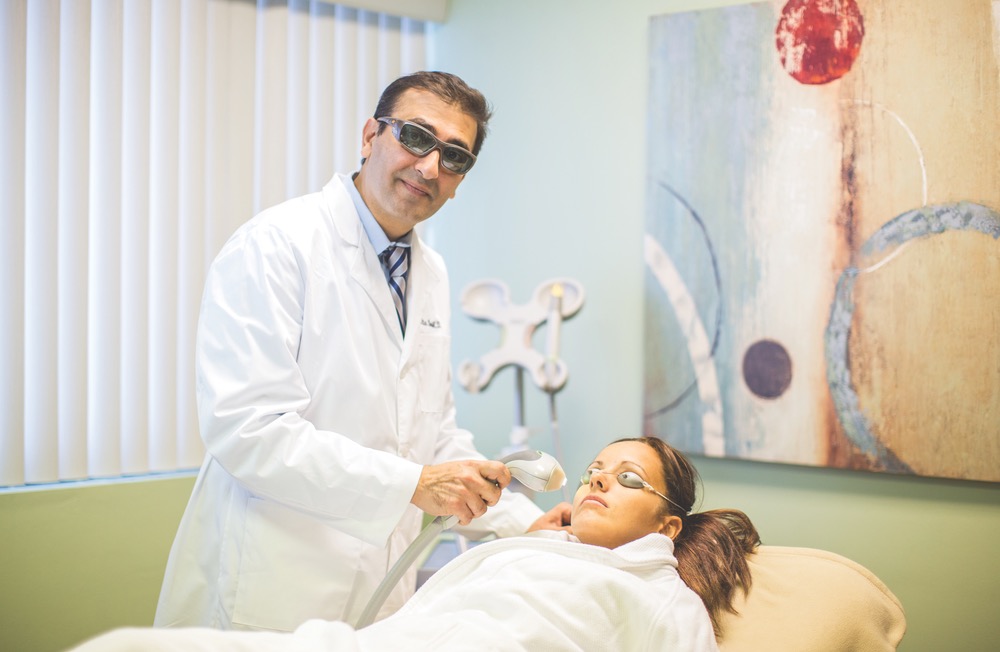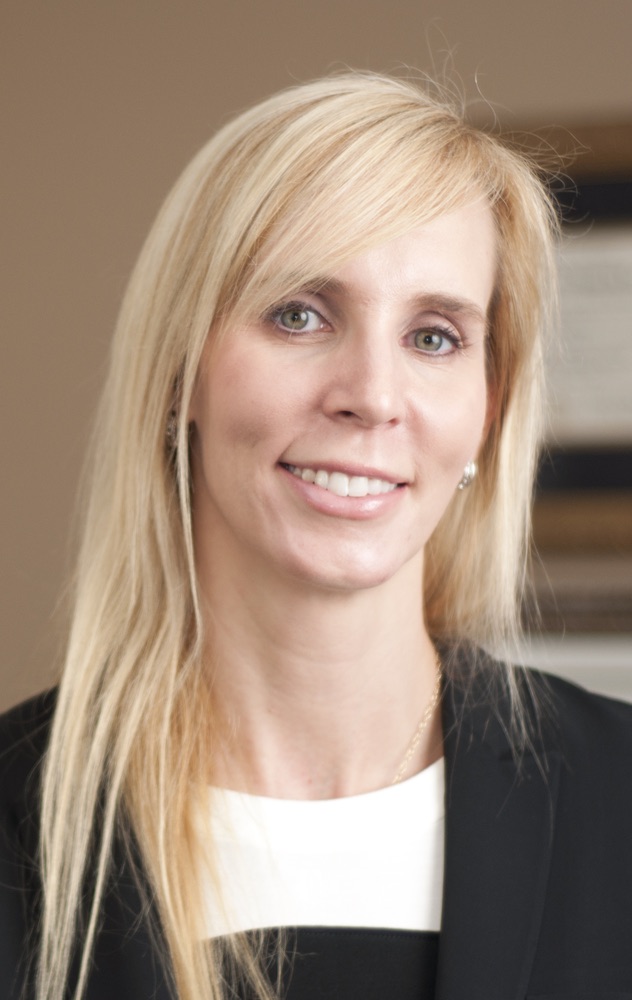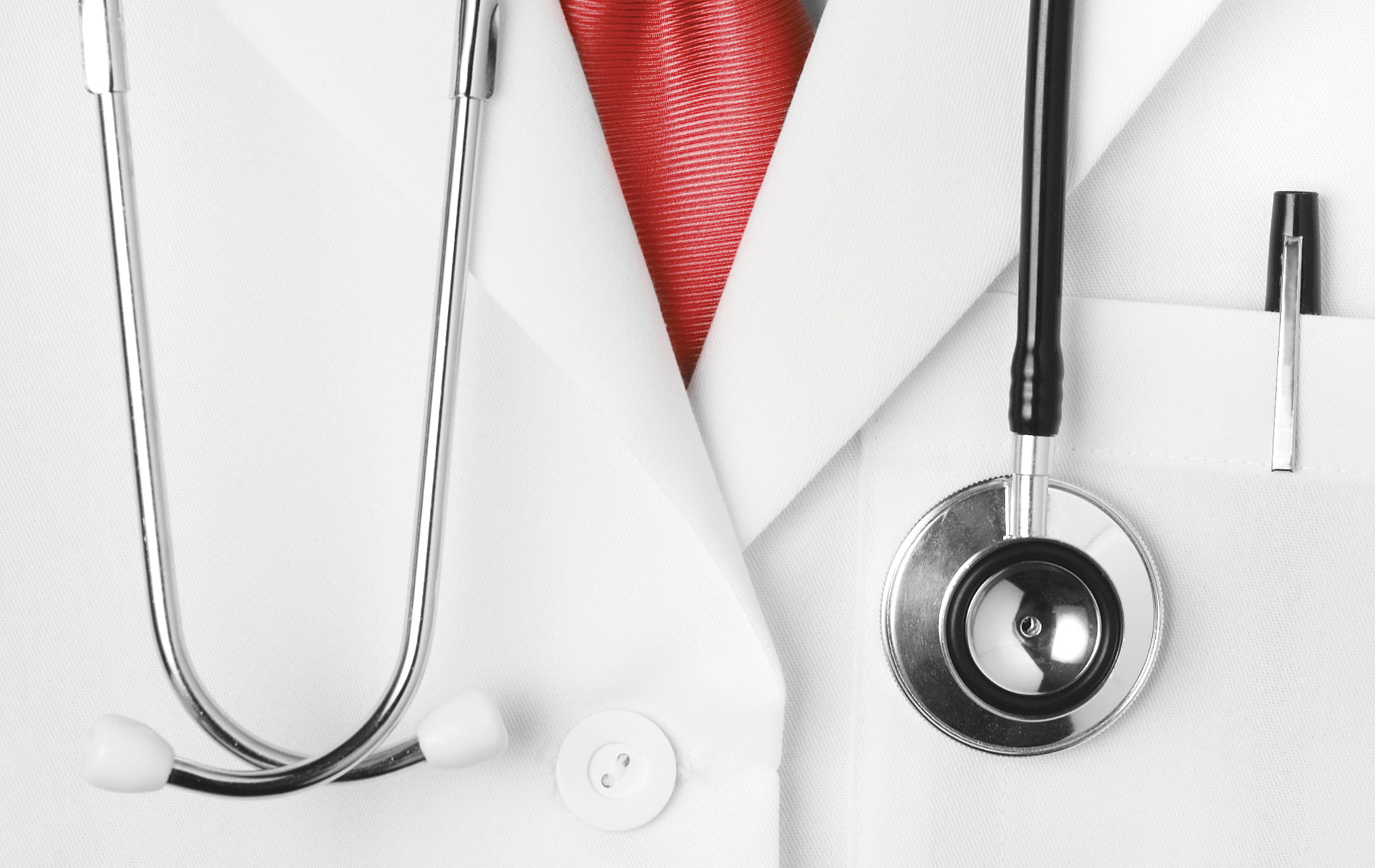
vie-magazine-physicians-profile
VIE’s 2012 Physicians Guide
By Sallie W. Boyles
An online search using the key words “2012 medical advances” yields a myriad of topics in numerous fields of medicine. Scientists are growing body parts like ears, bone, and skin in labs, which surgeons are using for facial reconstruction, most notably to heal wounded soldiers. Additionally, while implants are not new, the latest minimachines, now in operating rooms, restore vision, hearing, organ function, and mobility in ways that are downright astounding.
A tiny telescope in the eye, for instance, returns sight to a patient with macular degeneration. Cochlear implants, developed for profound hearing loss, are more feasible for less serious cases. Another implant, working similarly to the way in which a defibrillator regulates the heart, improves bladder function and keeps pain under control. Meanwhile, facilitating the success of orthopedic implants, microchips with sensors can be embedded in such devices to detect bacteria and increased body temperature, thereby alerting doctors to address problems before they become critical. At the same time, breakthroughs have been made in drugs to combat HIV, Parkinson’s disease, COPD, and depression.
Doctors are further offering procedures with less risk and better long-term outcomes through a variety of advancements. Materials used for surgical products, some of which are still in trials, have implications for all kinds of applications—from stabilizing broken bones to opening arteries. Moreover, scanning devices provide doctors with highly intricate images of the body without the health risks of X-rays. Surgical tools additionally play an essential role in conducting minimally invasive procedures that precisely pinpoint and address problem areas without any major incisions. Notably, too, is the fact that medical professionals can rely on their smartphones to share files and consult with colleagues around the world. The list goes on and on, and thanks to the evolution of communication technologies, the most recently approved innovations and findings can rapidly become tools in the hands of doctors who make a point of being informed and keeping pace for the benefit of their patients.
Unlike any other time in history, consumers are also learning about many of the latest developments as they unfold. Those who never studied anatomy scour websites for complex answers concerning health matters. Others take advantage of free screenings and informational pamphlets at health fairs. Likewise, when doctors speak to lay audiences, they find that individuals, hungry for information, have numerous questions.
No longer timid about asking questions, prospective patients also schedule consultations with various specialists to learn the implications of different treatment options. As patients and their loved ones become more outspoken, they more readily challenge a professional’s opinion. The days of sitting back in awe of the doctor are over, and those who don’t quite know what to ask can always find appropriate questions, as the ones that follow, online:
What is the purpose of the test?
How soon can I receive the results?
Why are you prescribing this treatment?
Do alternative treatments exist?
How many times have you performed the procedure?
What potential complications do I face?
Which hospital is best suited for me?
How do you spell the name of that medication/procedure?
What are the side effects?
Does the medicine have any interactions with drugs I’m currently taking?
Specialists accordingly report that many patients show up on their first visit armed with folders containing the facts they’ve gathered pertaining to their conditions. Consumers, relying on Internet searches along with professional and personal referrals, are also researching doctors before stepping foot inside their offices.
By and large, confident, skilled physicians want their patients to be well informed, and they encourage second and third opinions. Similarly, they respectfully follow up with patients as soon as test results and other crucial news become available. Savvy physicians are also more cognizant of the total patient experience, and they have to be concerned; individuals no longer want to choose between bedside manner and skill—they want doctors who exhibit both. Likewise, when educated individuals advocate for themselves and their loved ones, they generally seek out the most highly respected doctors. Physicians, of course, are humans with strengths and weaknesses, and some, undoubtedly, are more competent than others. Consumers, therefore, are wise to investigate their doctors’ reputations.
We are happy to report that each of the physicians we interviewed expressed tremendous passion while providing information and ideas, all of which will be eye opening to readers, whether they live in Northwest Florida or far away.
Since the ability to place one’s trust in a physician begins with being informed about the medical professional and his or her practice, we at VIE are pleased to continue a tradition of presenting our annual Physicians Guide, showcasing an exclusive selection of doctors who practice within our region of Northwest Florida. In describing their specialties—this year’s topics include cosmetic surgery, dentistry, dermatology, general health, interventional radiology, oncology, orthodontics, ophthalmology, vascular surgery, and weight control—the doctors offer revealing insights about how they practice medicine. They not only talk about the latest and greatest technologies and techniques, but also share professional and personal perspectives that one would not uncover without having a conversation with them.
We are happy to report that each of the physicians we interviewed expressed tremendous passion while providing information and ideas, all of which will be eye opening to readers, whether they live in Northwest Florida or far away. More than anything, our profiled physicians convey high standards that readers can use as benchmarks when contemplating the qualifications of doctors they have under consideration.
Coastal Vascular and Interventional
By Sallie W. Boyles
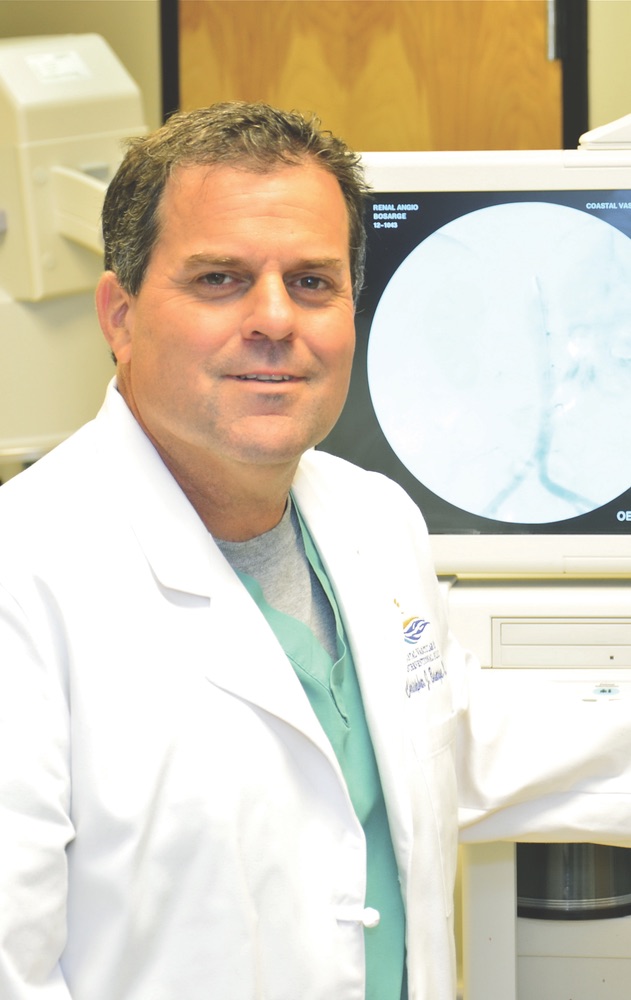
Dr. Christopher J. Bosarge Photo by Phillip Makselan
Key Statistics
Location: 1851 North 9th Ave., Suite B, Pensacola, FL 32503. For a list of satellite office locations, please visit CoastalVI.com.
Specialty: Vascular surgery and interventional radiology
Physicians: Christopher J. Bosarge, M.D., Harry R. Cramer Jr., M.D. F.S.I.R., Stuart Harlin, M.D. F.A.C.S., Fernando Kafie, M.D. F.A.C.S., Christopher J. LeCroy, M.D., Ginger L. Manos, M.D., Aaron B. Montgomery, M.D., and John Tucker, M.D. F.A.C.S.
In 1964, Dr. Charles Dotter, known as the “Father of Interventional Radiology,” made history by using a catheter to open the blocked artery in an eighty-two-year-old woman’s leg. The procedure was a last resort for the elderly patient, who had refused amputation surgery despite having a gangrene-ravaged foot. Following Dr. Dotter’s intervention, all of her pain ceased, the dead flesh of her toes simply sloughed off, and the woman was able to walk out of the hospital on her own. Today, nearly fifty years later, the most innovative treatments continue to follow the basic principles of angioplasty, a technique of widening a narrow passage, and stenting, which entails inserting a tube into the opening. Such procedures, known for being minimally invasive, have transformed vascular surgeries and their outcomes over time.
Optimizing the treatment options for patients who suffer with a broad range of vascular diseases—from benign spider and varicose veins to the life-threatening aortic aneurysm—a group of vascular surgeons and interventional radiologists have merged in Coastal Vascular and Interventional (CVI), a practice that exploits the educational backgrounds, professional insights, and skills of both specialties. Although overlap exists in their respective fields, the interventional radiologists deliver the expertise of performing certain intricate procedures, and the vascular surgeons contribute their surgical expertise of the veins and arteries.
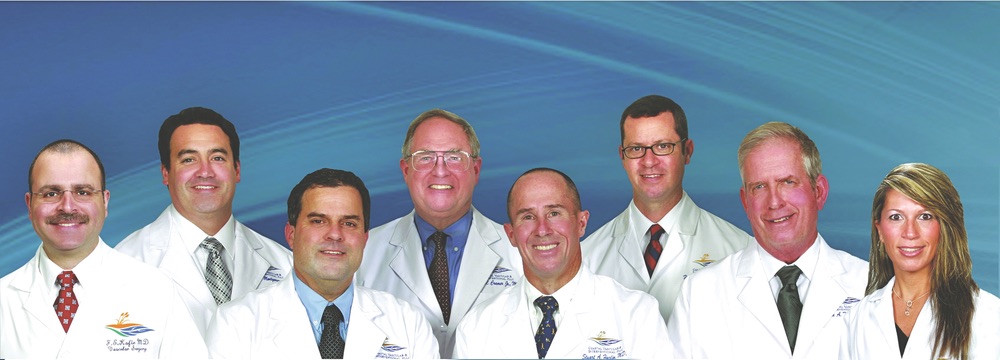
The Doctors of Coastal Vascular and Interventional
Photo by J.D. Hayward
“Our work requires a much higher level of precision than sewing arteries together,” says Stuart Harlin, vascular surgeon and president of CVI. Aside from performing delicate procedures, he indicates that one of the biggest challenges today is determining the most suitable treatment alternative for a patient. Teaming up for the benefit of collaborating, CVI’s eight physicians serve patients from thirteen different offices, including eight hospitals, over a region that stretches from Foley, Alabama, to Miramar Beach, Florida. Dr. Harlin personally performs about 1,400 procedures each year. The fact that CVI operates a high-volume clinical practice with an extensive professional network uniquely qualifies the group to participate in research and education, thereby exposing their patients to the most advanced medicine available.
CVI’s state-of-the-art main office, the Coastal Vascular and Interventional Center in Pensacola, demonstrates how patient care, research, and education work together. The clinic itself provides a full range of services—diagnostics, outpatient treatment, and follow-up—in a comfortable, patient-friendly environment. Many receive complete care there without ever having to set foot in a hospital.
Additionally, the group’s strong research initiative invites the most cutting-edge tools and information into their practice. A number of medical products and equipment manufacturers, for instance, rely upon CVI for their clinical trials. “Vendors are highly reactive to our suggestions and allow us to engineer modifications based upon our experiences,” says Dr. Harlin, who majored in engineering as an undergraduate.
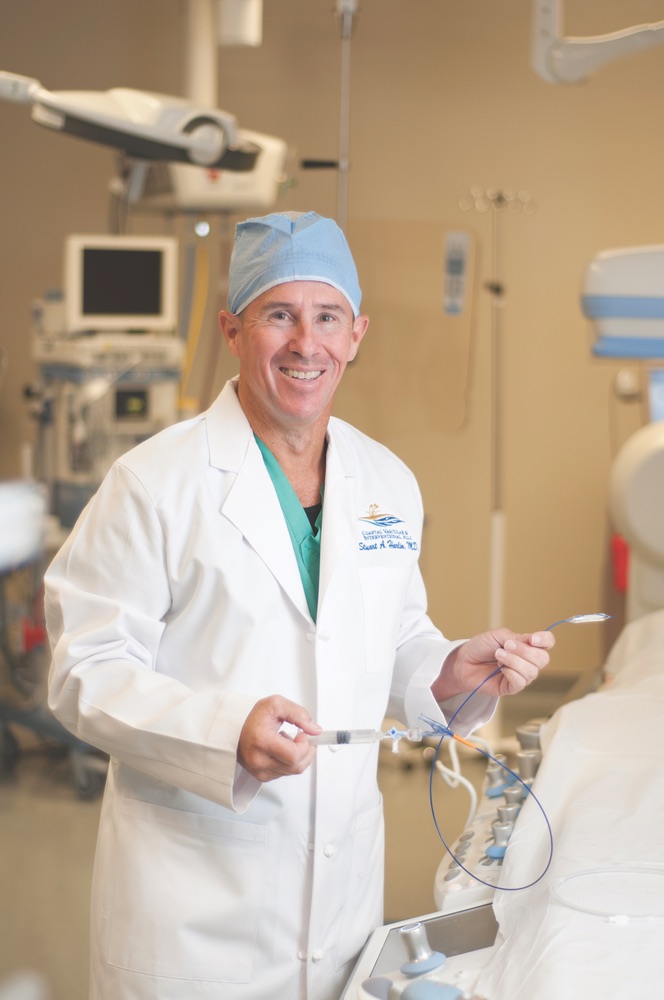
Dr. Stuart Harlin
Photo by Troy Ruprecht
Notably, CVI’s trials and research provide a fertile training ground for surgical students. Currently, the practice provides vascular surgery fellowship training through the University of South Carolina and the University of Texas. “We are coming as close as we can to being a true academic center,” Dr. Harlin says.
Taking part in a number of patient trials, the doctors welcome opportunities to test new technologies and modified techniques involving graphs, stents, and “rotor rooters”—devices that shave away plaque to eliminate blockages. “We’re participating in abdominal aortic aneurysm studies and clinical trials affecting the carotid artery and peripheral arterial disease,” says Dr. Harlin.
In light of dramatic medical advances over the past few years, many patients are surprised to learn how quickly they can recover. “They delay treatment because they are worried,” says interventional radiologist Christopher Bosarge, “and then they’re in and out on the same day, often within three hours.”
Describing why innovations continue to make such a difference, he says, “By having smaller tubes to shave away the plaque, we now put less pressure on the artery because we don’t have to open it up as much. Another important change on the way is a stent that is medically coated to prevent buildup of scar tissue.” Tissue naturally forms inside a stent over time, causing the passage to narrow again, so the new coating precludes the need to reopen the blockage in the future.
“Endovascular procedures also allow us to treat patients who are too high risk to go into the operating room,” says Dr. Ginger Manos, the newest vascular surgeon to join CVI and one of a handful of women in her field. “Although a long blockage will generally require us to do open bypass surgery, the extent of the disease and the condition of the individual will dictate the procedure and how durable it will be. That’s the discussion I have with my patients.”
“A leg bypass is more durable than angioplasty,” says Dr. Harlin, “but we can offer any of the treatment options.” Interestingly, he reveals that about 75 percent of leg work is now catheter based. “Patients need to know that intravenous surgeries have changed,” Dr. Harlin adds. “The procedures are office-based with minimal recovery and no pain. We also use ultrasounds for screenings, which are safe.”
Vascular problems, however, are generally serious when left untreated, and complications often become emergencies because people miss the warning signs. Cold feet and cramping in the calves while walking, for instance, are possible signs of peripheral arterial disease (PAD) in which the arteries that carry blood to the legs and feet become blocked. The condition can lead to heart attack and stroke, but the symptoms are commonly ignored. Likewise, individuals who have asymptomatic diseases fail to get proper screenings.
“People are aware of women’s health issues,” says Dr. Manos, “but they don’t know enough about vascular problems, like diabetic wounds. I was in the operating room last night with a patient who had a diabetic leg that wouldn’t heal.” Fortunately, the patient’s own veins were used to repair the blockage, and the prognosis was good.
While vascular diseases continue to be treated, not cured, doctors offer positive news. “The diseases haven’t changed,” says Dr. Harlin, “but people are living longer. The outcomes have changed.”
While vascular diseases continue to be treated, not cured, doctors offer positive news. “The diseases haven’t changed,” says Dr. Harlin, “but people are living longer. The outcomes have changed.”
As a result, CVI’s physicians continually work to generate awareness about vascular disease in a variety of ways, such as by participating in health fairs, offering screenings, hosting continuing education symposia, and even appearing on television. “We also regularly visit doctors’ offices,” says Dr. Harlin, who believes that education and reminders help busy physicians in family and internal medicine practices remain alert to subtle warning signs in patients.
Patients also need to be informed about their diagnoses. “Alternatives exist for treating almost every condition,” says Dr. Bosarge. “Patients need to do their research.” Noting that more patients are arriving with their own findings in hand, Dr. Bosarge welcomes the consumer-driven trend occurring in his field. “In this day and age, our offices have to be flawless, and we have to treat our patients well,” he insists. “We have to call our patients back with news; we cannot leave people hanging. I’m constantly calling my patients to check in.”
The CVI specialists are pleased to be part of an extensive medical community of top-notch physicians who do put their patients first. Consequently, they happily recommend their region of the country for its natural assets and for the excellent doctors—a combination for a great quality of life.
For more information about Coastal Vascular & Interventional, readers should visit coastalvi.com and coastalveininstitute.com, or call 850.479.4223.
Andrews Institute Hand Center
By Sallie W. Boyles | Photography provided by Andrews Institute
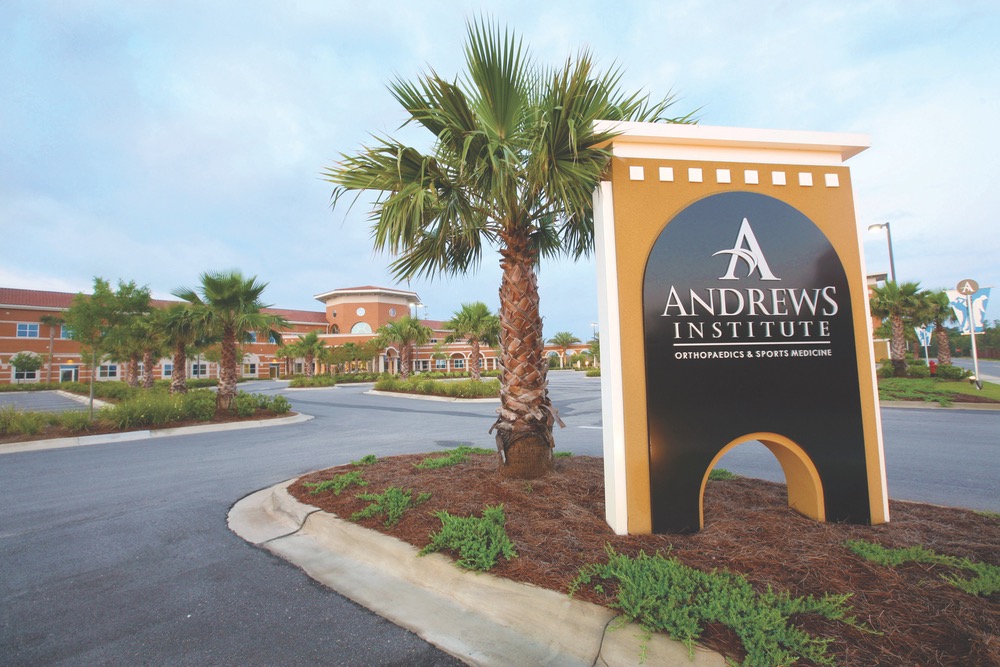
Key Statistics
Location: 1040 Gulf Breeze Parkway, Gulf Breeze, Fla. 32561
Specialty: Orthopaedic Hand Medicine
The hands and wrists rely upon the coordinated efforts of twenty-seven bones, twenty-nine major joints, 123 ligaments, forty-eight nerves, thirty arteries, and thirty-four muscles to be able to hold, touch, feel, grasp, manipulate, and caress. Instinctively, the appendages also rise to the occasion and serve as a first line of defense in shielding the body against such mishaps as falls and flying objects. Considering their intricate design and function, it’s no wonder that approximately 10 percent of emergency room visits involve hand injuries. In addressing hand-related problems, including congenital deformities and diseases, hand specialists play a significant role in advancing orthopaedic medicine.
The specialized area of medicine that focuses on the hand, wrist, arm, elbow and shoulder originated during World War II, when an unprecedented number of wounded soldiers survived such injuries. Patients were initially assigned to various types of surgical units (general, orthopaedic, and plastic), but conferring physicians agreed that a unified approach, one that merged their individual disciplines to create a special field of study, would broaden their understanding of the hand and improve treatment outcomes. Today, doctors who are certified in the subspecialty must complete an orthopaedic, general, or plastic surgery residency in addition to a fellowship in the surgery of the hand, which encompasses orthopaedic, plastic, vascular, and neurosurgery.
Despite their surgical training, hand surgeons draw upon many other treatment options, including splinting, therapy, and injections. Consequently, patients with a broad range of conditions and concerns, from minor to urgent, turn to hand surgeons for their expertise, whatever the diagnosis. Many patients are also relieved to learn that their insurance policies will cover their visit to a hand surgeon without a referral.
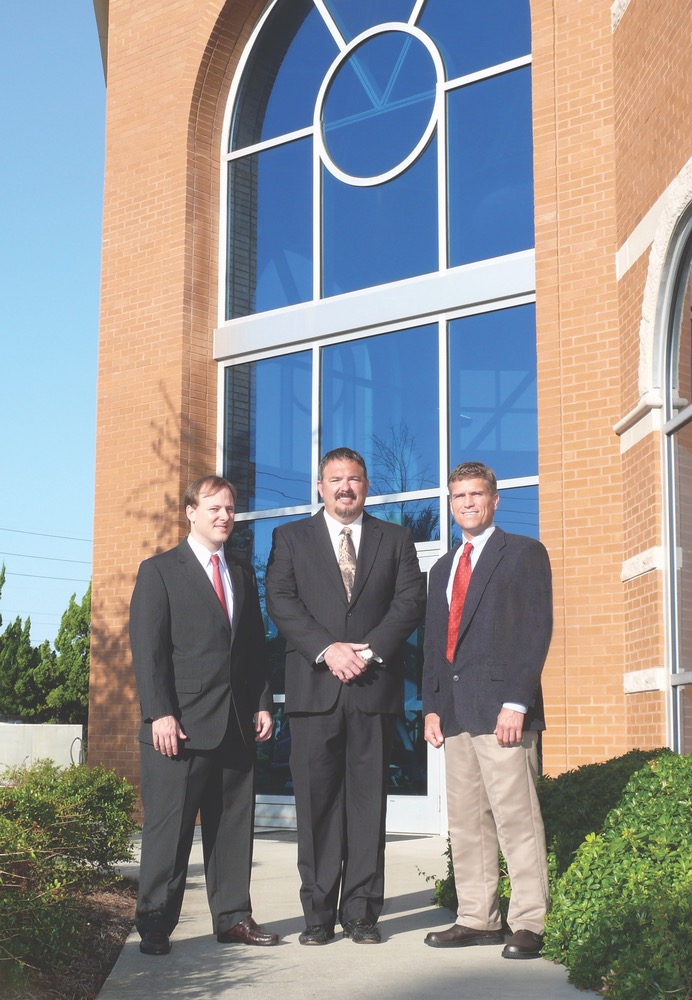
Left to right: Alexander C. Coleman, M.D., Barry S. Callahan, M.D., Steven C. Kronlage, M.D.
In concert with a philosophy of providing access to the best care available, the Andrews Institute for Orthopaedics & Sports Medicine operates the Hand Center under the direction of three orthopaedic surgeons who are fellowship-trained hand surgeons. Barry S. Callahan, M.D., Alexander C. Coleman, M.D., and Steven C. Kronlage, M.D. personally care for patients as well as perform leading-edge research to advance their knowledge for the benefit of patients and colleagues worldwide.
Dr. Callahan, who is particularly interested in sports injuries, sees a number of professional athletes along with many others who enjoy being active. All receive attentive care, but the path of treatment differs based upon the patient’s goals. “A more aggressive philosophy definitely exists in managing sports injuries,” he says. “Professionals aren’t going to stop playing, so all options must be explored for serious athletes who won’t listen if we just recommend rest. When immobilization is out of the question, our decision regarding surgery has to meet their aggressiveness.”
While professional athletes demand full restoration of function and rapid recovery, children in sports can pose even greater challenges. “Our big push is education,” says Dr. Callahan. “The skeletally immature can play sports, but they need balance. A child can’t play baseball or soccer year-round without suffering an injury.”
“I was having a discussion with a colleague about Little League elbow,” says Dr. Kronlage, referencing the swelling and tenderness that results from overuse. “We concluded that we should not even face such problems because no kid should be pitching enough to cause that level of physical stress.”
Callahan adds that coaches and parents must comprehend the harm of children playing through pain, and bone fractures are not the only causes for concern. “The kid who has an injury does not have to be playing during recovery, unlike the paid professional.”
At any age, a patient’s recovery over the long term can be compromised when problems are ignored. When injuries to soft tissue—ligaments and joints—are neglected during the acute phase, results can be disastrous. The thought that, “It’s just a finger” is the wrong approach. The joints are highly sophisticated because of the number of movable parts, and a small problem can become a major issue.
The kid who has an injury does not have to be playing during recovery, unlike the paid professional.
“We use our hands for everything,” says Dr. Coleman, “and losing the use of just the thumb translates to a 40 percent disability. You need to see a hand surgeon when something doesn’t work after an injury, for example, if you can’t make a complete fist or straighten your finger.”
Hand Center physicians, in fact, would rather reassure an overcautious patient than inform someone who postponed an appointment that permanent damage had been caused due to the delay in treatment. “Don’t ignore a sprained wrist that remains swollen or black and blue,” Dr. Callahan cautions. “If your primary care physician says your wrist X-ray is normal but your pain persists, see a hand specialist.”
Coupling their knowledge with the latest technology, hand specialists offer excellent prognoses for severe cases that, until recently, were grim. Among the few facilities in Florida to own and use the Leica Varioscope for advanced microsurgical reconstruction of the hand and upper extremities, Andrews Hand Center physicians perform delicate procedures, such as replacing damaged nerves with synthetic nerve tubes, with minor incisions. “We operate with a high level of finesse,” says Dr. Callahan. “With our ability to repair primary and peripheral nerves under magnification, it’s possible to run a saw through your hand and have some function restored— unlike previous years when amputation was the only option.”
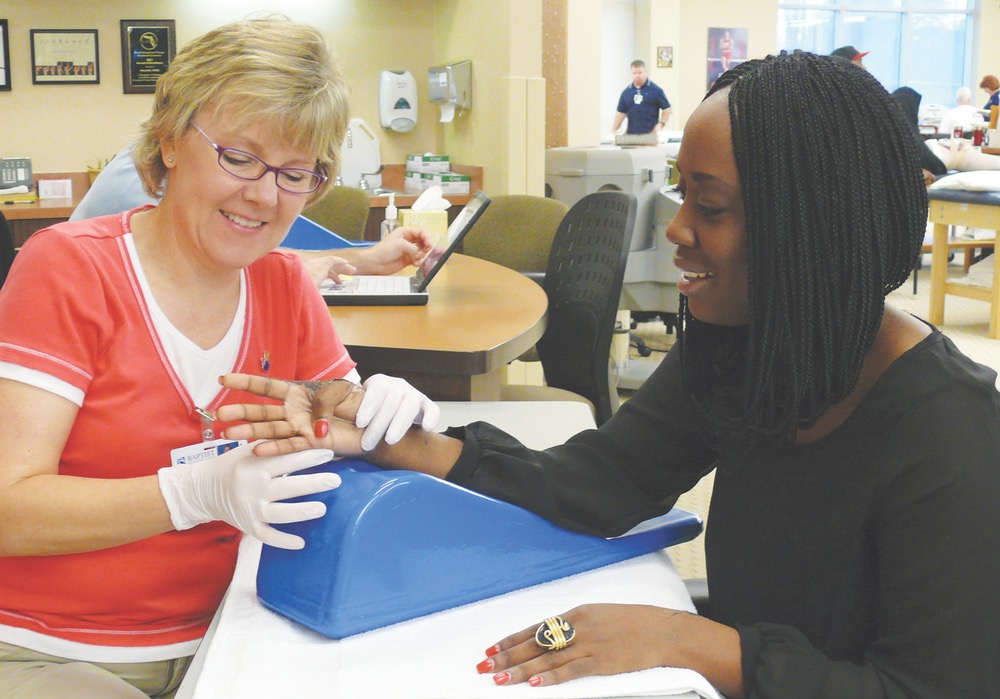
Heidi Richardson, OTR/L, CHT, works with Qwana Gable for treatment after a burn injury
Advancements in surgical tools and materials are, by all accounts, extraordinary. “If you have a smashed elbow or wrist,” says Dr. Kronlage, “the materials now available make everything easier.” For instance, bone graph substitutes made of many of the same minerals found in bones, like calcium and phosphates, now simplify procedures like wrist repairs. Instead of harvesting bone from the pelvis, which intensifies the patient’s pain, the surgeon uses the bone substitute to fortify the wrist until living bone grows back. The substitute, by the way, dissolves on its own. “This is a science of restoration of function,” says Dr. Kronlage, who performs between ten and fifteen elbow and wrist surgeries each week.
Tendon transfer surgery represents another significant development, as in cases of rheumatoid arthritis. “If the tendon in the arthritic thumb has ruptured, we can replace it with one of the index finger’s two flexor tendons,” says Dr. Coleman. Interestingly, a short period of occupational therapy is needed to retrain the brain. “The patient has to think about straightening the index finger to extend the thumb, but the brain relearns quickly,” he says, adding that the Hand Center’s certified hand therapists significantly contribute to patients’ successful outcomes. “You can have the best hand surgeon,” he insists, “but you won’t have ideal results without optimal support for recovery.”
Andrews Hand Center specialists openly express their satisfaction in addressing what they term as “structural problems” and delivering solutions that generally produce rapid, life-enhancing improvements for patients. While their patients are grateful to them, the hand specialists feel privileged to practice in such an intricate field of medicine and within a facility that places every capability imaginable—from digital X-ray equipment and on-site certified hand therapists to state-of-the-art research facilities—at their fingertips. For added convenience, occupational therapy services with hand therapists are available at several Andrews Rehabilitation facilities across Northwest Florida.
For appointment scheduling or additional information, including educational resources, the specialists at the Andrews Hand Center encourage readers to call 850.916.8700 or visit www.andrewsinstitute.com.
Dr. Bawa: Whole Life Makeovers From the Inside Out
By Tori Phelps | Photography by Romona Robbins
key statistics
Location: 45 Sugar Sand Lane, Santa Rosa Beach, FL 32459
Specialty: General medicine, weight loss, bio-identical hormones, aesthetics
Physicians: Nitin Bawa, M.D., Keri Matheus, W.H.N.P., and Jill Smith, PA-C
Hormones seem to be on a mission to make us miserable. When you’re a teenager, they’re raging; when you’re a little more mature, they can knock you for a loop in a whole new way, working behind the scenes to impact everything from weight gain to disease. But hormones may have met their match in Nitin Bawa, MD.
He’s been a fixture in the Emerald Coast holistic medicine movement in the eight years since he was recruited to the area. His specialty is internal medicine, but through his practice at Dr. Bawa and Associates, he takes a special interest in bio-identical hormones, weight loss, and aesthetics—a trifecta that can significantly affect the way his patients— women especially—look and feel about themselves. It’s actually been his female patients who’ve shaped the way he currently practices medicine. “One of my patients asked me to get trained in bio-identical hormones because she wanted me to help her with them,” he says.
In his desire to assist her and, as it turned out, many more patients, Bawa received extensive advanced training to learn how to properly prescribe bio-identical hormones—something that isn’t taught in most residency programs.
One reason may be because it’s such a new concept, both for doctors and the general public. It’s taken celebrities like Oprah and Suzanne Somers to bring attention to the topic, Bawa points out, because TV and magazine advertisements will never make them a household name. Why? Pharmaceutical companies have no interest in marketing generic bio-identical hormones. “Most doctors get their knowledge at drug company–sponsored free lunches and buy into the products they sell,” he says. “But often the generic products are less expensive and better.”
That leaves women at the mercy of their personal physicians, many of whom aren’t up to speed on the benefits of bio-identical hormones (which are hormones that humans make themselves). “Lots of doctors only know how to prescribe synthetic hormones like Premarin, which is made from pregnant mares’ urine,” Bawa explains. “Studies have shown it increases the risk of heart attack, stroke, and blood clots, yet it’s still very heavily prescribed, even though generic estradiol—which is what the human body makes—is cheaper and readily available.”
Most people equate “hormones” with “estrogen,” but Bawa says there are a variety of hormones that can help—or hinder—us. Fatigue, for instance, can be a result of hormone imbalance, as can weight gain and even a low sex drive. “Besides estrogen, women also need hormones like progesterone and testosterone,” he says. “There are some studies showing progesterone, which is available over the counter, might reduce the risk of breast cancer. However, most doctors don’t know how to help people with this.”
Studies have shown it increases the risk of heart attack, stroke, and blood clots, yet it’s still very heavily prescribed, even though generic estradiol—which is what the human body makes—is cheaper and readily available.
Most people equate “hormones” with “estrogen,” but Bawa says there are a variety of hormones that can help—or hinder—us. Fatigue, for instance, can be a result of hormone imbalance, as can weight gain and even a low sex drive. “Besides estrogen, women also need hormones like progesterone and testosterone,” he says. “There are some studies showing progesterone, which is available over the counter, might reduce the risk of breast cancer. However, most doctors don’t know how to help people with this.”
You may have heard of cortisol, the stress hormone; many of us have too much or too little of it. “Too much causes weight gain, and too little causes fatigue. Adjusting this helps with energy and makes it easier to lose belly fat,” Bawa clarifies.
Testosterone is given in very small quantities to women, and it has to be made in a compounding pharmacy. In fact, the best way to get any hormone, he says, is through a cream from a compounding pharmacy. But again, most physicians don’t have the training or knowledge necessary to prescribe these custom-made creams.
That’s certainly not a problem for Bawa. He’s one of the only doctors in the area with extensive experience in bio-identical hormones and the lone provider who also takes insurance. But people come from miles away for something other than simple clinical expertise: his holistic approach to patient care, especially when it comes to weight loss, can produce success where other doctors have failed before. “It helps to look at each patient individually, determine what’s standing in the way of their goals, and then systematically remove those hurdles,” he says.
For patients who are using alcohol to self-medicate, that means finding the root of the problem. Then, like a domino effect, everything falls into place because cutting out the alcohol makes it easier to lose weight. Other patients have hormonal imbalances that are easily straightened out and—voilà!—they’re now able to lose weight. Still others need help controlling anxiety and depression, which can cause them to overeat.
Part of Bawa’s edge is that he uses both medications and over-the-counter supplements to find the perfect prescription for each patient, something cookie-cutter programs can’t do. “Many doctors don’t like to help people with weight loss, but I love to figure out what I can do to help people lose weight. I’ve had great results by treating each patient individually, adjusting their hormones and then using different modalities for weight loss,” he says. “I’ve definitely found my calling.”
Some of those modalities include things like hCG, lipotropic injections, phentermine, and natural supplements—all of which are popular with his patients. Of course, everyone wants to look and feel great, but he says there’s something about living on the Emerald Coast that makes people want to carpe diem when it comes to their health and happiness.
Naturally, that involves loving what they see in the mirror, too. Dr. Bawa has found that once his patients have lost weight and are feeling happier and healthier, they want to look better as well, which is why he has invested several years of research into various laser and aesthetic treatments for his patients. His studies led him to partner with a laser company, and the end result is a full-service laser clinic that offers therapies like laser vein removal for the face and legs, LimeLight (a programmable IPL—intense pulsed light—device) to help reduce and eliminate sun spots and redness, the Pearl Fusion procedure that can reduce wrinkles and take ten years off a person’s appearance, and laser hair removal. No other clinic in the area offers the wide range of laser services that Dr. Bawa does.
His one-size-does-not-fit-all mind-set is something he’s passed along to his physician assistant and nurse practitioner who also employ his popular holistic approach with patients. “People appreciate that we can use supplements, for instance, to help with mood, rather than just ordering antidepressants for everyone,” he says. “Our technique is so popular, I have people who fly in from other states to get their hormones adjusted and then stay to get laser procedures or additional help with weight loss.”
Whether treating age spots or belly fat, Bawa does his research to make sure every method is the most effective as well as the safest—even testing supplements on himself before giving them to clients. While that requires extra time on his end, he’s happy to put in the work if it means better outcomes for his patients. “I went into medicine to help people,” he confides, “and I think I’m really able to help patients in unique ways with what I do.”
For more information on Dr. Bawa and his services, visit DrBawa.com.
Coastal Radiology Associates: Drs. Craig and Bethany Cazenave
BY Sallie W. Boyles | PHOTOGRAPHY BY ROMONA ROBBINS

Key Statistics
Location: 1000 Mar Walt Dr., Fort Walton Beach, FL 32547
Specialty: Radiology, neuroradiology, vascular and interventional radiology
Physicians: Craig R. Cazenave, M.D. and Bethany A. Cazenave, M.D.
Radiology, well-known as the medical specialty that utilizes imaging to diagnose and treat diseases, developed from the invention of the X-ray. In 1895, with his wife Anna Bertha lending a hand (literally and figuratively), German physicist Wilhelm Conrad Röntgen captured the radiographic image of her hand’s skeleton. Astounded by the revelation, Anna Bertha purportedly exclaimed, “I have seen my death!”
In light of that eye-opening moment, the Röntgens would have undoubtedly been amazed by the scope and detail of images viewed regularly by modern radiologists. If only they could have time traveled to 2012 and shadowed another husband-and-wife team, Drs. Craig and Bethany Cazenave! Often assisting one another, the Cazenaves serve physicians and patients through their practice, Coastal Radiology Associates, which operates from Fort Walton Beach Medical Center in Fort Walton Beach.
Practicing in a group of six radiologists, the Cazenaves appreciate the exceptional advantages they have as a married couple who share professional interests and, at times, collaborate on cases. “Few couples work as colleagues in the same medical practice,” says Dr. Bethany Cazenave. “We really enjoy our time together, and in our professional capacities, we complement one another.” Although their qualifications overlap, they deliver different areas of expertise.
Considering that radiology is the most infrequently chosen specialty among female doctors, Dr. Bethany Cazenave, also a subspecialist in women’s imaging, is uniquely qualified to serve her colleagues and patients. Starting out, however, she intended to be a general surgeon. “I wanted to do breast cancer surgery, but when I looked at radiology, I realized it was an awesome field of study with so many options, including breast imaging.” The woman’s imaging fellowship she completed through the University of Pittsburgh enabled her to train in breast imaging as well as in female-related conditions—gynecologic oncology, postpartum complications, and infertility. Although Dr. Cazenave likes the fact that radiology keeps her involved in all kinds of modalities (from OB/GYN to vascular) and all ages of patients (from pediatric to elderly), she has an affinity for women’s health, and her female patients are drawn to her.
Although Dr. Cazenave likes the fact that radiology keeps her involved in all kinds of modalities (from OB/GYN to vascular) and all ages of patients (from pediatric to elderly), she has an affinity for women’s health, and her female patients are drawn to her.
From her experience in treating breast conditions, Dr. Cazenave says, “Women like having a female physician, particularly for breast problems. I’ll observe a palpable sigh of relief in women when they see that I’m their doctor. I easily connect with them, yet it is extremely difficult to tell patients that they have something wrong involving one or both breasts.” Consequently, whether or not an abnormality found by a mammogram is indicative of cancer, Dr. Cazenave strives to encourage patients to focus on the next step. “I want them to leave my office thinking that we will be proactive and move to the next diagnostic step, which in many cases includes additional tests or possibly a biopsy. Many patients don’t have breast cancer, but unfortunately, the path to a diagnosis can sometimes be frightening.” Sensitive to her patients’ need to know, she says, “We work as a team to get the diagnosis as soon as possible, and subsequently discuss the findings and further recommendations with the patient as soon as the results are available.”
Without supplanting the referring physician’s orders, Dr. Cazenave also responds to general questions about health, touching on topics like weight, exercise, and diet. “Obesity can play a role in breast health,” she says, recommending an active lifestyle with strength training for women who are healthy enough to work out. “Osteoporosis,” she points out, “is a concern for women. When we lift weights, we’re taxing muscles and joints and causing a chemical turnover in the bone matrix that can improve bone density in normal patients.” A number of patients, too, have questions about dietary supplements as the possible cause of their breast disease. “They wonder if the microcalcifications in their breasts have been caused by calcium supplements,” she says, assuring that is not the case.
Recognizing that women desire usable information about such issues, Dr. Cazenave is expanding her efforts to speak to female audiences in lay terms about diseases that can affect them. “I feel that I can be a positive influence in reaching out to women who are seeking a professional opinion from a woman,” she says.
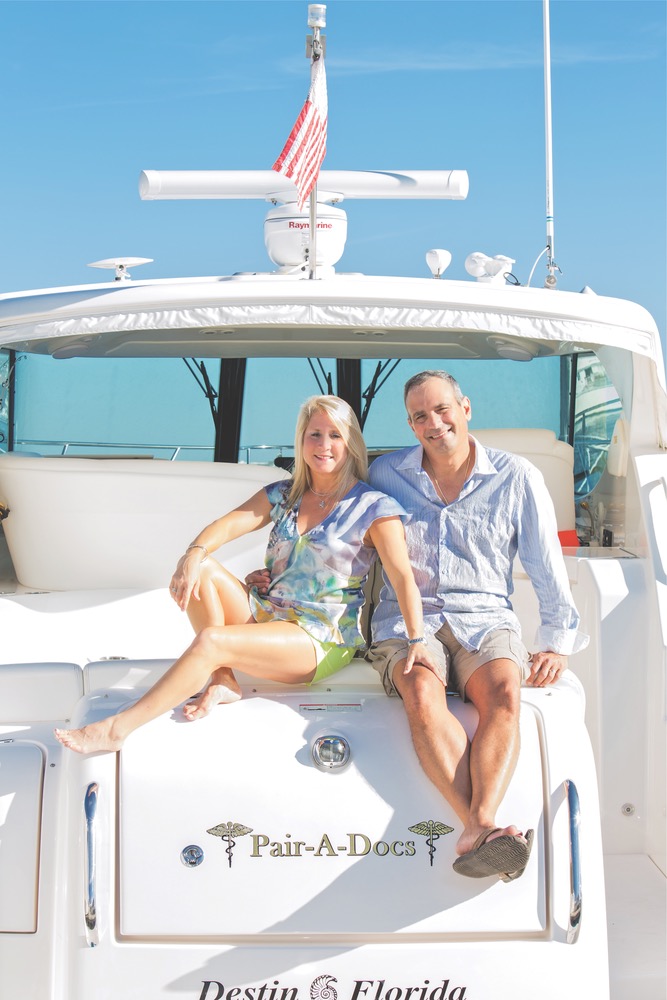
While urging individuals to be informed, Dr. Cazenave cautions people to avoid information overload, especially if facing what appears to be a grim prognosis. “Be educated, but if you go online, you’ll find so much information that it may scare you unnecessarily,” she says, advising individuals to consult with their physicians before jumping to conclusions. “We’re used to working with the problem day in and day out, so we can generally explain why there’s no need to get upset.”
At the same time, as experienced radiologists, the Cazenaves readily acknowledge that many cases do not exhibit textbook symptoms. “When we see something that’s perplexing,” says Dr. Bethany Cazenave, “we have to render a differential diagnosis—it could be this, or it could be that—and then we have to look at the individual from a clinical standpoint.”
Similarly, Dr. Craig Cazenave, in practice for over thirty years with fellowships in neuroradiology and in vascular and interventional radiology, claims that he individualizes care to improve clinical outcome.
Since some answers do not appear in a book, Dr. Cazenave has a tendency to ponder ideas. Because of his experience, he can coordinate multiple different techniques from different specialties to obtain optimal outcomes for the patient.
Emphasizing that medicine is an art applied for the benefit of the patient above all, Dr. Cazenave says, “Medicine is practiced at the bedside; the further you get from the bedside, the colder medicine can be. As physicians, we’re obligated to be at the bedside taking care of patients.”
“Craig is an extremely compassionate physician,” says Dr. Bethany Cazenave. “That’s what attracted me to him.” Such admiration is mutual. Dr. Craig Cazenave respects his wife for striking a delicate balance between compassion and confidence, as shown in her bedside manner. “She’s not a wallflower or a freight train,” he says.
Above all, they are a husband and wife who genuinely enjoy being together, both inside and outside the hospital. When not working, the Cazenaves love participating in social activities and charitable events, and they fully take advantage of Northwest Florida’s outdoor adventures, like boating and diving. And as the name of their boat, Pair-A-Docs, suggests, they expect ups and downs in life, but maintain a sense of humor about it.
Readers can learn more about Coastal Radiology Associates or schedule a consultation by visiting Fort Walton Beach Medical Center’s website at fwbmc.com, or by calling the hospital at 850-862-1111.
Doctors Helping Doctors Help Patients
By Laurie Crowley
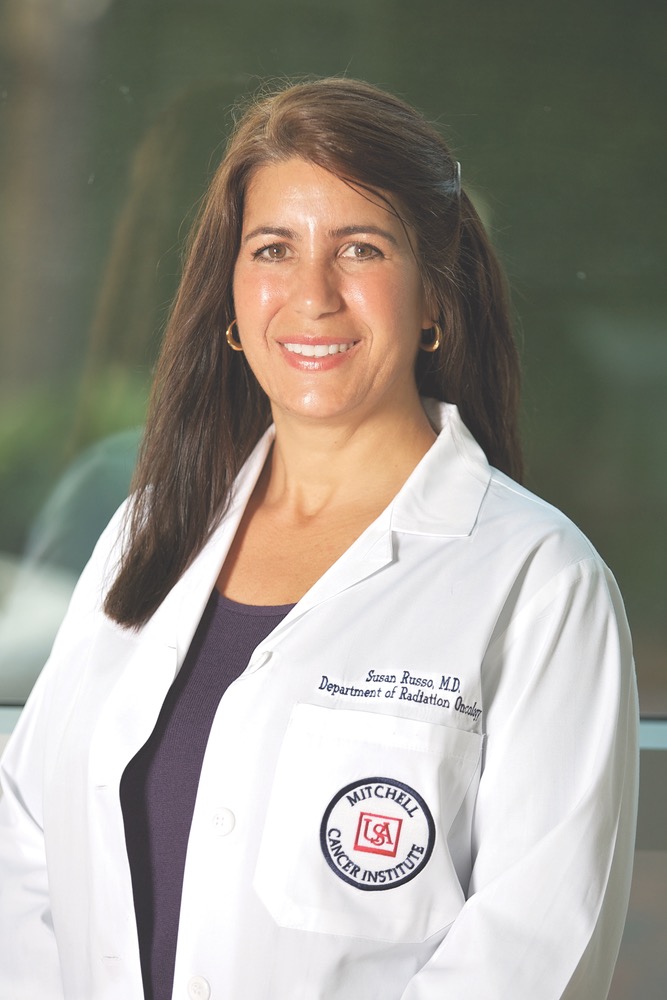
Photo by Dan Anderson
Key Statistics
Location: For a list of all office locations, please visit White-Wilson.com.
Specialty: For a complete list of services offered, please visit White-Wilson.com.
Physicians: John Chaney, M.D. and Suzanne Russo, M.D.
A spirit of cooperation and collaboration and a passion for healing have brought together two physicians who are leading the fight against lung cancer. It has long been known that early detection and treatment is vital to beating the odds in cancer survival, but treatment options are not always available or desired by the patient with certain types of cancer. That is why it is so encouraging that John C. Chaney, M.D., of White-Wilson Medical Center in Fort Walton Beach, Florida, has teamed up with Suzanne Russo, M.D., of the University of South Alabama Mitchell Cancer Institute in Mobile, Alabama, to give patients not only cutting-edge cancer treatment but also a renewed hope in the fight against this aggressive disease.
Dr. Chaney
White-Wilson Medical Center is one of the largest multispecialty physician groups on Florida’s Emerald Coast. Dr. Chaney is one of fifty physicians providing health-care services in twenty different specialties. Dr. Chaney is board-certified in pulmonary disease, internal medicine, critical care medicine, and sleep medicine, and he is the only pulmonologist in the area with the expertise to place fiducial markers into the lungs of cancer patients, allowing them the opportunity to be excellent candidates for radiation treatment at the Mitchell Cancer Institute in Mobile. “That is how my relationship with Dr. Russo and the USA Mitchell Cancer Institute (MCI) began,” noted Dr. Chaney. “I was familiar with the work Dr. Russo was doing at MCI and excited about the state-of-the-art CyberKnife System being used there, and I knew immediately our specialties complemented each other.”
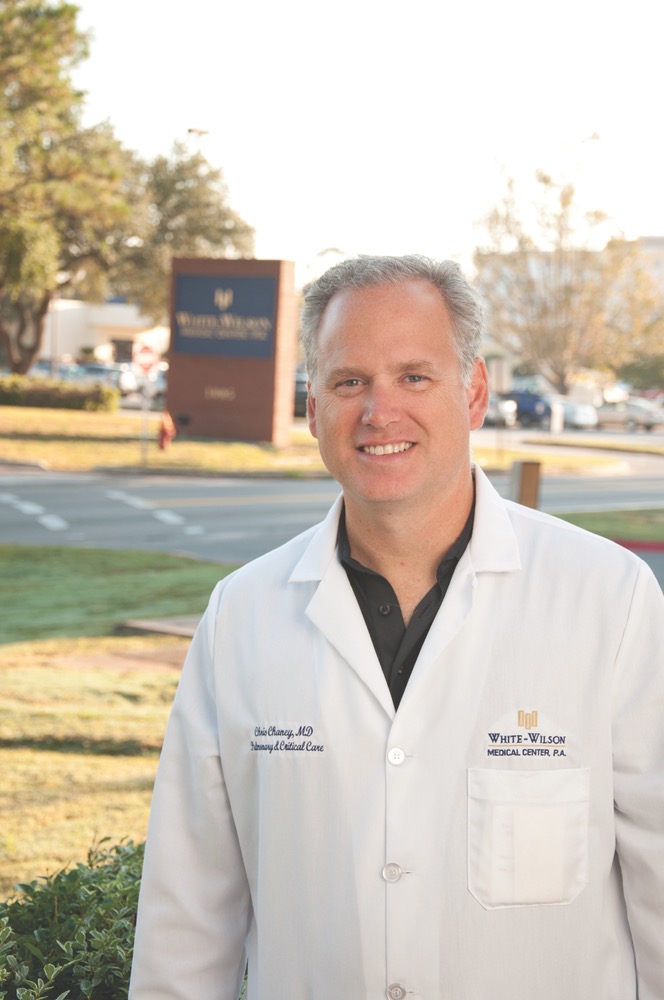
Photo by Troy Ruprecht
Dr. Russo
Dr. Suzanne Russo, a radiation oncologist and Philip Rubin Professor of Interdisciplinary Oncology with the Mitchell Cancer Institute, was equally eager to share her expertise with Dr. Chaney and his patients. Dr. Russo noted, “Typically the treatment for lung cancer involves surgery along with some form of radiation or chemotherapy. Oftentimes, surgery is not an option due to the compromised condition of the patient. Emphysema, coronary artery disease, or stroke, for example, can make a patient a poor candidate for surgery, but fortunately there are other options.”
One such option is the CyberKnife® Robotic Radiosurgery System, a viable, noninvasive alternative to surgery for the treatment of malignant and nonmalignant tumors anywhere in the body. The treatment—which delivers high doses of radiation to tumors with extreme accuracy—offers new hope to patients who have inoperable or surgically complex tumors, or who may be looking for an alternative to surgery. The USA Mitchell Cancer Institute is one of less than a hundred institutions in the United States to have this state-of-the-art machine.
“Our relationship provides cutting-edge science and state-of-the-art clinical expertise to a region rather than an institution,” says Dr. Russo. To that end, Dr. Russo explained that through the cooperation of cross disciplines, a wider range of patients have access to state-of-the-art treatment.
The Road to Recovery
Dr. Chaney places the fiducial markers in the patient’s lung using navigational bronchoscopy. “This technology allows me to place the ‘seeds’ in and around the tumor accurately, which then allows Dr. Russo the ability to radiate the tumor with pinpoint accuracy, sparing the surrounding good tissue,” he says. This procedure is done on an outpatient basis, making it easy for those living outside the Fort Walton Beach area to be back in their own homes by dinnertime.
Likewise, patients traveling to the Mitchell Cancer Institute in Mobile, Alabama, from the Fort Walton Beach area are able to get their radiation treatments done in as few as five days. Until the CyberKnife System was introduced, there wasn’t much to offer patients who typically had to endure six weeks of radiation therapy, five days a week. Since the treatment is offered on an outpatient basis, it is painless, noninvasive, and generally lasts between thirty and ninety minutes; patients can return to their normal activities immediately.
Both Dr. Russo and Dr. Chaney have had only positive feedback from their patients, who note a mutually professional and caring experience. Now, whether you live in the Florida Panhandle or on the Gulf Coast of Alabama, cutting-edge cancer treatment is a mere two hours away. Dr. Russo points out that, “Patients don’t mind traveling if they know they are getting the best care possible.”
About the USA Mitchell Cancer Institute
The University of South Alabama Mitchell Cancer Institute includes some of the leading cancer specialists in the nation. Working closely with local and regional hospitals and physicians they continue to live their motto, Minds over Cancer.
Focusing on the multidisciplinary approach to medicine, MCI is leading the fight with a team of scientists, researchers, and physicians, attacking cancer on all fronts. Bringing together expert minds, MCI is committed to providing the best cancer care available today while continuing groundbreaking research that can ultimately save lives. Located in a 125,000-square-foot state-of-the-art facility, MCI brings cancer research and treatment under one roof. At the heart of this “all in one” approach is a strong spirit of collaboration between clinical care, basic and translational research, and, most especially, the referring physician. This interdisciplinary cancer team works together to develop life-saving treatments for cancer patients.
For more information on the USA Mitchell Cancer Institute, visit usamci.com. For more information on White-Wilson Medical Center, visit white-wilson.com.
Advanced Eye Care
By Sallie W. Boyles
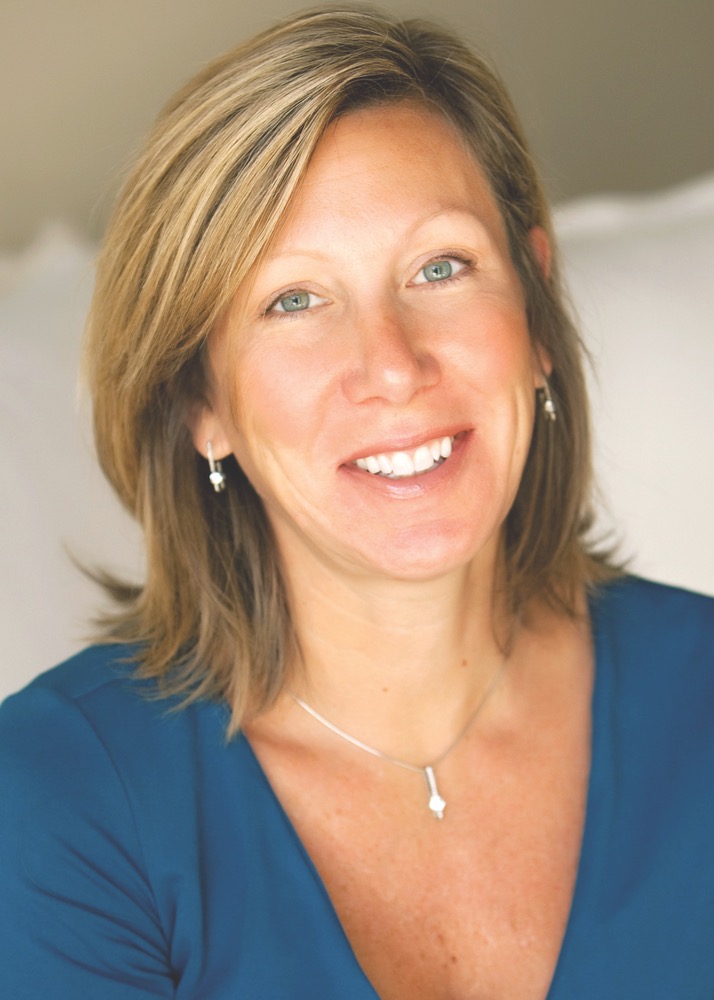
Photo by Marla Carter
Key Statistics
Location: 2500 West 23rd St., Panama City, FL 32405
Specialty: Ophthalmology and optometry
Physicians: Ben Hasty, M.D. and Lori Ann Long, O.D.
Most people value their vision above all the five senses yet don’t bother having their eyes checked until they suffer an injury or experience problems that can’t be ignored. A regular vision checkup is a good idea, especially when holding reading materials at arm’s length or squinting to see a road sign is no longer effective. Whether all appears well or not, children should have their vision checked periodically by an eye doctor, young adults should undergo eye exams at least every three years, and seniors every year. Additionally, those who wear glasses or contact lenses should see their eye doctors annually or as professionally recommended. At the age of forty, individuals should be checked for glaucoma, and by the age of sixty to sixty-five, all should schedule annual visits to watch for cataracts, glaucoma, and macular degeneration.
Having practiced in Panama City for twenty years, Dr. Ben Hasty attended medical school at St. Louis University on a Navy scholarship and then proudly served as Senior Medical Officer of the Marine Corps Air Station Futenma in Okinawa, Japan, and Assistant Wing Surgeon at MCAS El Toro, California. His ophthalmology training included the University of Florida; the University of California, San Francisco; the University of Southern California; Naval Hospital Oakland, and Stanford University. In addition to being a board-certified ophthalmologist through the American Board of Ophthalmology, he is also a certified cataract and lens implant surgeon through the highly selective American Board of Eye Surgery. Moreover, Dr. Hasty is the only fellowship-trained glaucoma specialist in the area. He is a member of the Florida Medical Association, the American Society of Cataract and Refractive Surgery, and The Bays Medical Society.
Whether all appears well or not, children should have their vision checked periodically by an eye doctor, young adults should undergo eye exams at least every three years, and seniors every year. Additionally, those who wear glasses or contact lenses should see their eye doctors annually or as professionally recommended.
Dr. Lori Ann Long is one of the few residency-trained optometrists in the Northwest Florida area. In fact, only 12 percent of optometrists are offered the opportunity to do a residency program after completing optometry school, yet Dr. Long was offered two residency positions. She chose to do hers at Hershey Medical Center in Pennsylvania, where she worked alongside ophthalmology residents. Since completing this extra year of intensive training, she has worked predominantly in ophthalmology offices during her nineteen years of practice. In addition to performing routine eye exams, Dr. Long specializes in multifocal and bifocal contact lenses, dry eye syndrome, glaucoma, diabetic eye care, and macular degeneration.
Drs. Hasty and Long are in practice together at Advanced Eye Care of Panama City. They are dedicated to helping individuals achieve and maintain the best quality of vision possible and treating patients with the most innovative techniques in eye care. Advanced Eye Care offers a variety of refractive surgery options—procedures that adjust the eye’s ability to focus by reshaping the cornea or by implanting a lens inside the eye—in addition to general ophthalmology treatments to help restore and maintain optimal vision health. Drs. Hasty and Long provide eye care for the entire family; their services include LASIK surgery, cataract surgery, diabetic eye exams, glaucoma management, and comprehensive eye exams for contact lenses and glasses.
Patients of Advanced Eye Care also receive a wide variety of contact lens options, including the newest bifocal and multifocal contacts. “Our team helps patients choose the best type of contact lenses or glasses for their eyes,” says Dr. Long. “Starting with the correct prescription, we leave no stone unturned to ensure that each patient leaves our office with the perfect look and feel, as well as expert instruction for proper care and use of contacts.”
The doctors and staff of Advanced Eye Care are committed to delivering a positive experience in every aspect of care. “If patients are in for their annual eye exams or more pressing ophthalmology needs, we give them all of the time they need, and we strive to see everyone promptly,” says Dr. Hasty.
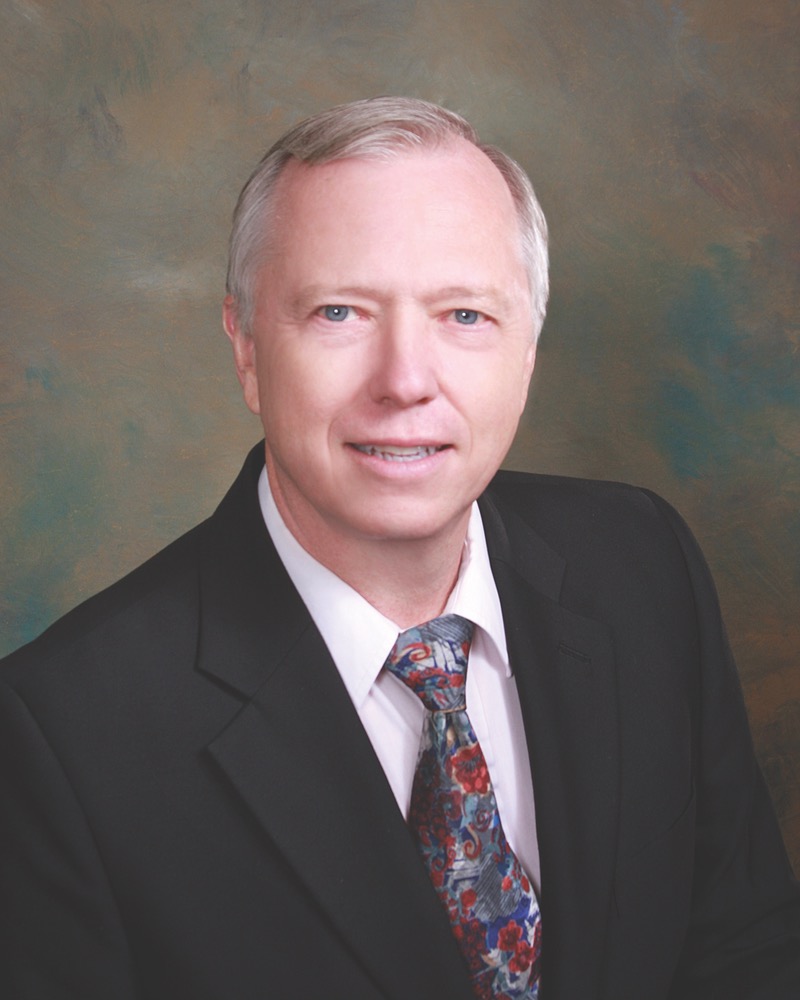
Photo by RCL Portrait Design
For additional information or to make an appointment, Advanced Eye Care can be reached by calling 850.763.2020. Advanced Eye Care will change the way you see the world.
CoolSculpting at the Aesthetic Clinique
BY Steven F. Weiner, M.D. | PHOTOGRAPHY BY ROMONA ROBBINS

Key Statistics
Location: 2050 West County Hwy. 30-A, Suite 114, Santa Rosa Beach, FL 32459
Specialty: Facial plastic surgery
Physicians: Steven Weiner, M.D.
Does the idea of removing fat in the love handles or abdominal area using a procedure that is completely noninvasive, only takes a couple of hours, and has no downtime appeal to you? If it does (and why wouldn’t it?), then CoolSculpting is something you need to look into.
The CoolSculpting device has been on the market since 2009 and proves to be a very safe and effective treatment for removing that stubborn fat that just doesn’t seem to go away, despite all the hours spent in the gym. Before the advent of CoolSculpting, liposuction had been the mainstay for treating problem areas, but there are several drawbacks to this procedure: downtime, a need for anesthesia, discomfort, and a potential for uneven results. The ability to walk in and walk out and go to the gym or to lunch is an extremely attractive factor of the CoolSculpting treatment. You don’t have to miss any work, wear tight, binding garments, or change any bandages. In fact, there are no restrictions on activity or diet, and there is no need for wound care. Some might argue that liposuction is more aggressive because larger amounts of fat can be removed. This is true, but there is nothing preventing a person from getting a second or even a third treatment with CoolSculpting to achieve the desired results. Keep in mind that CoolSculpting is indicated for people who are within 15 percent of their ideal body weight, so it’s not meant for the very obese client.
CoolSculpting was conceptualized by Dr. Rox Anderson and Dr. Dieter Manstein of the Wellman Center for Photomedicine, which is associated with Harvard Medical School and Massachusetts General Hospital. The two knew of a phenomenon called “popsicle panniculitis,” which is loss of fat in the cheek area after a child freezes it while sucking on a popsicle. They also found a case report of a woman riding a horse naked in cold weather that resulted in fat loss on her inner thighs after they became extremely cold. They postulated that cooling fat could lead to fat loss.
Back in the lab, the two physicians found that fat was more sensitive to cold than were muscle, nerves, skin, and vessels. They were able to find an optimum temperature to maximize the destruction of fat, while leaving all of the other structures unharmed. The concept of cryolipolysis (“cryo” = cold + “lipolysis” = breaking up of fat) was created. After the fat was exposed to cold for a certain amount of time, it was terminally injured and would gradually die. Over time, the body would remove the dying cells, with no increase in lipid or cholesterol levels in the blood.
They postulated that cooling fat could lead to fat loss.
With further research, it was found that about 25 percent of the abdominal fat treated was reduced in one treatment. Additional treatments have been shown to further reduce the fat by about the same amount.
CoolSculpting was cleared by the FDA in 2009 and was used off label for fat reduction initially. It was incorporated into the Aesthetic Clinique’s practice in December 2009. We were the second in Florida to treat with CoolSculpting, and among the first twenty in the country.
The areas that have been treated in our office at the Aesthetic Clinique are the abdomen (upper and lower), the flanks (love handles), and the “muffin top.” Treatments are based on cycles, and each cycle is one hour. The number of cycles a person will need depends on the amount of fat and the area being treated. Sometimes a larger handpiece, about twice the size of the regular handpiece, can be used on the abdomen; this can reduce the time of a treatment.
There is no downtime and side effects are minimal. Some of these are bruising, numbness, moderate pain (reported by 0.04% of patients, lasting for a couple of weeks), no visible results, or enlargement of the fat (reported in only five cases or 0.001% of patients). These statistics are based on 303,000 treatments.
The procedure is relatively painless, and most people work on their computer or watch movies during their treatments. Currently, CoolSculpting is almost three years old and has proven itself as being safe, comfortable, and effective with solid research and highly regarded physicians backing it. For those looking for more information, visit TheClinique.net.
About Dr. Weiner:
Steven F. Weiner, MD, is a board-certified Head and Neck and Facial Plastic Surgeon. He completed medical school at the University of Michigan, then interned and spent his residency at the Johns Hopkins Hospital. In mid-2005, Dr. Weiner created The Aesthetic Clinique, where he concentrates 100 percent of his efforts on noninvasive and minimally invasive cosmetic procedures.
Dr. Tara Griffin
BY TORI PHELPS | PHOTOGRAPHY BY ROMONA ROBBINS
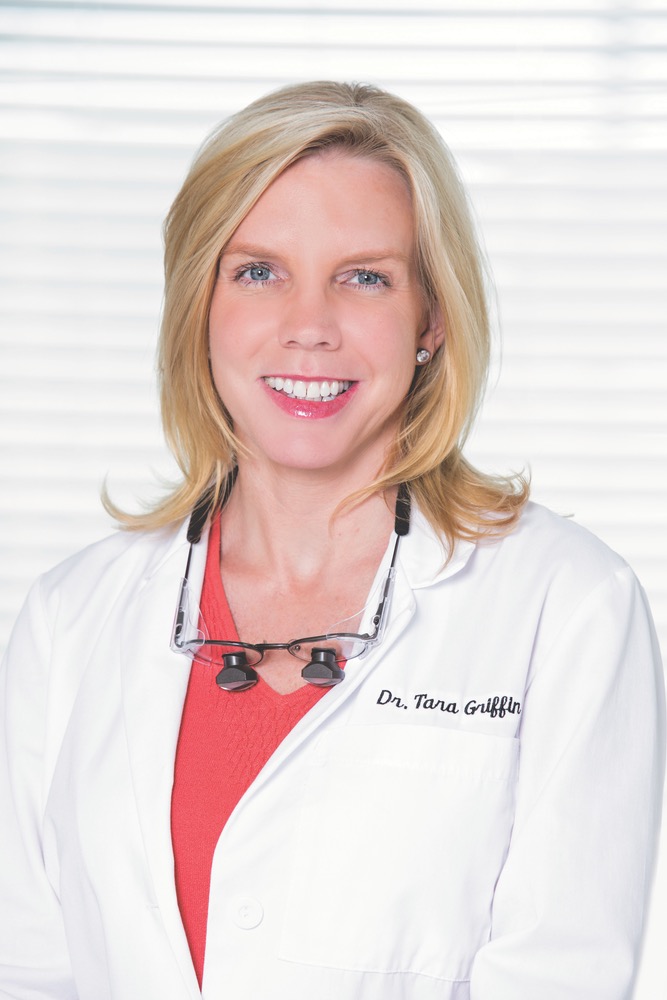
Key Statistics
Location: 3135 Thomas Dr., Panama City Beach, FL
Specialty: Dentistry, aesthetics
Physicians: Tara Griffin, D.M.D.
Dr. Tara Griffin is no ordinary dentist. Sure, she expertly fixes cavities and makes sure your teeth are squeaky clean, but she might also save your life while you’re in her chair. This overachiever not only offers premier dental and day spa services through her Emerald Coast Dental Spa practice, but her recently launched Emerald Coast Dental Sleep Medicine also provides potentially life-saving treatments for people suffering from sleep apnea.
This medical powerhouse actually started her career in environmental consulting before a chance encounter in Dr. Carlton Schwartz’s Bay County dental office convinced her that she wanted to make a similar impact on people’s lives. After earning her D.M.D. degree at Nova Southeastern University, Griffin had the opportunity to take over a family practice in Dallas, but she decided to come back to the area—and the dentist—that started it all. She went into practice with Dr. Schwartz and eventually purchased the business from him, expanding it into a virtual one-stop shop for medical and aesthetic services.
The Emerald Coast Dental Spa offers an impressive lineup of cosmetic procedures like teeth whitening, as well as family-friendly general and laser dentistry and some orthodontics. Griffin says one of the most popular procedures she performs is the Rembrandt Sapphire In-Office Whitening System—a method that uses a very powerful light and professional-grade teeth whitening gel to deliver instant results with almost zero sensitivity. And because Griffin’s goal is to make life as easy as possible for her patients, she also offers facial cosmetic services such as BOTOX, Juvéderm, Obagi Nu-Derm, Jeunesse Luminesce anti-aging products, and even nutritional supplements. “I truly want what’s best for each patient,” Griffin says. “I’m compassionate about what I do for people and how I treat them, and it shows in each of my businesses.”
To ensure patients’ long-term health, Griffin spent two years receiving advanced education in dental sleep medicine. With that essential training, she founded Emerald Coast Dental Sleep Medicine (ECDSM) in December 2011, introducing a much-needed service to the community. Hers is the first practice in the Florida Panhandle that solely treats sleep apnea and snoring, taking on patients who’ve been diagnosed with snoring and/or obstructive sleep apnea. “We treat people with oral appliances much like a retainer or night guard,” she explains, saying these smaller devices may be able to replace a burdensome CPAP machine during sleep.
Sleep medicine isn’t the only area in which she’s a proud trailblazer. The practice’s newest technology is a Planmeca 3D cone beam CT scan, a state-of-the art dental X-ray unit that uses very low radiation to evaluate the bones, sinuses, airways, and much more. “I’m currently one of seventeen doctors in Florida—and the only doctor in the Panhandle—who is certified in epigenetic orthodontics with the DNA Appliance,” she says. “The use of the cone beam CT scan enables me to offer the best treatment options to ensure optimal success with orthodontic treatment.”
Hers is the first practice in the Florida Panhandle that solely treats sleep apnea and snoring, taking on patients who’ve been diagnosed with snoring and/or obstructive sleep apnea.
Griffin, who received a Small Business Award from the Panama City Beach Chamber of Commerce and was named “Top Dentist” by Panama City Living magazine, says part of the reason she’s achieved so much success is that she had a great mentor—and suggests other potential business owners do the same. One thing her mentor drove home the very first time she met him was superior customer service, a lesson she’s never forgotten. “Patients are always complimenting us on our customer service and quality of care,” Griffin says. “In fact, I measure success by the number of patient referrals I receive and by how many hugs, smiles, and tears of joy I see when someone has had a life-changing moment.”
An enthusiastic athlete, Griffin knows the importance of whole body health, which is what drew her to medicine in the first place. “I joined the dental profession to make a real difference in people’s lives through health care,” she says. “In the discovery of dental sleep medicine, I now have the ability to not only positively impact, but save people’s lives.”
For more information on Emerald Coast Dental Spa/ Emerald Coast Dental Sleep Medicine, call 850-249-9311.
Gulf Coast Dermatology
BY TORI PHELPS | PHOTOGRAPHY BY Troy ruprecht
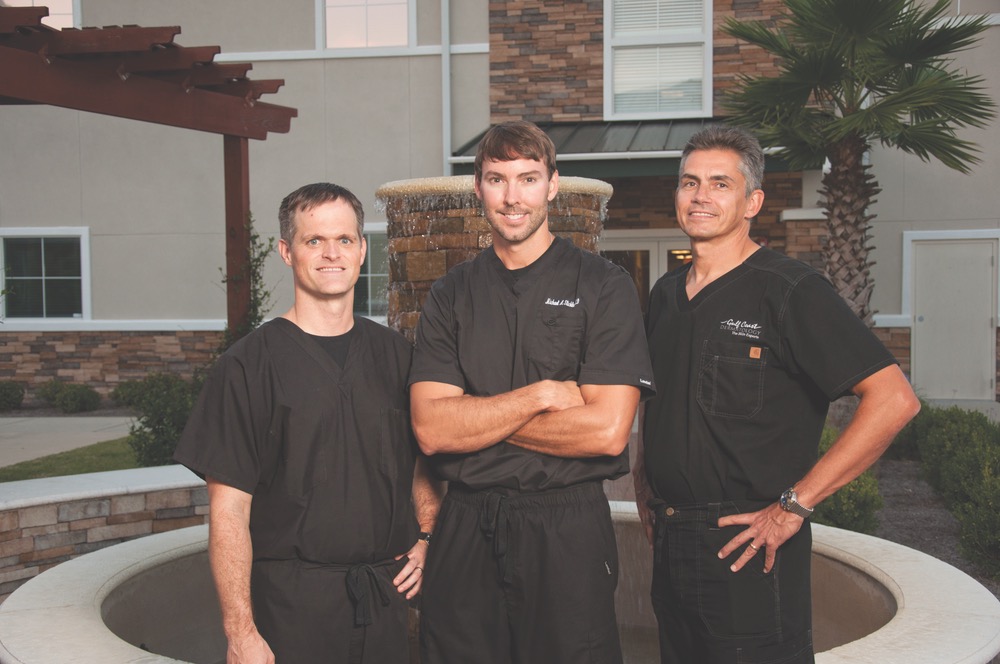
Drs. Jon Ward, Michael Stickler, George von Hilsheimer, and Neil Sandhu (not pictured), are leaders in the treatment of skin cancer and the region’s only physicians to offer noninvasive superficial radiation therapy
Key Statistics
Location: For a list of all office locations, please visit GulfCoastDerm.com.
Specialty: Medical, surgical, and cosmetic dermatology
Physicians: Jon R. Ward, M.D. and Michael A. Stickler, M.D.
Skin cancer can be a life-and-death battle, and the physicians at Gulf Coast Dermatology know the first step toward fewer casualties is making top-notch care more accessible. That’s why Dr. Jon Ward and Dr. Michael Stickler offer an astounding sixteen locations throughout North and Central Florida, Southeast Alabama, and Southwest Georgia—with two more set to open this year. “Our mission is to look at areas where dermatology is underserved and bring offices to those areas,” Ward says. “There’s never been a dermatologist based out of Santa Rosa County, for example. Why not open an office there so those 150,000 people don’t have to travel to Pensacola to receive specialty skin care?”
Ward and Stickler are part of a team of eleven physicians and nine physician extenders who oversee care at Gulf Coast Dermatology. Ward, who founded the practice in 2006, says Stickler’s introduction of Mohs micrographic surgery in 2007 marked a new day in their skin cancer focus, making Gulf Coast Dermatology the first practice in Bay County to offer the technique.
Mohs, a form of skin cancer surgery that delivers the highest cure rates, is just one weapon in their arsenal. They’re the only medical practice in the Florida Panhandle to offer superficial radiotherapy (SRT), a painless, nonsurgical option that uses low-energy radiotherapy in a dose similar to an X-ray. Gulf Coast Dermatology, then, has three approaches (including simple excision) to defeat skin cancer, and they are the sole practice in the area to provide this array.
So if you go to a radiation oncologist, you’ll probably be offered radiation. If you go to a surgeon or dermatologist, you’ll probably be offered a surgical technique. But because we offer all treatment modalities for skin cancer, we can give an unbiased opinion based on what’s best for the patient.
Having options means the Gulf Coast Dermatology physicians can focus on the most effective treatment for the individual. “Most patients are presented with limited options based on what their physician offers,” Ward says. “So if you go to a radiation oncologist, you’ll probably be offered radiation. If you go to a surgeon or dermatologist, you’ll probably be offered a surgical technique. But because we offer all treatment modalities for skin cancer, we can give an unbiased opinion based on what’s best for the patient.”
If that best option happens to be SRT, patients get a breakthrough technology that’s designed specifically to treat skin cancer, rather than the all-purpose linear accelerators used in most radiation oncology practices. While these can treat skin cancer, they’re also designed to treat deeper structures like lymph nodes or breast tissue. “All we’re treating is skin cancer, so our device is designed for skin. It gives very high cure rates and high cosmetic satisfaction when compared to a linear accelerator.”
Though the focus at Gulf Coast Dermatology is skin cancer, the practice also offers the innovative Aqua Medical Spa for cosmetic procedures ranging from BOTOX™ to laser hair removal. Its newest addition—miraDry sweat reduction—hits particularly close to home for Ward, who has suffered from embarrassing underarm hyperhidrosis (excessive sweating) since he was a teenager. “Once I learned patients only need one to three treatments to permanently relieve underarm hyperhidrosis, I was sold. I’ve had my first treatment, and I’ve had no underarm sweating that hasn’t been induced by exercise.”
Another Aqua Medical Spa highlight is CoolSculpting, a procedure that eliminates pockets of fat that are resistant to diet and exercise. It’s not a weight-loss technique, Ward warns. Rather, it’s for people who are near their ideal weight but may have love handles or want a smoother back view in a strapless dress. There are no incisions and after the one- to two-hour office procedure, there is no downtime, making it perfect for patients who want a more natural approach to cosmetic corrections.
While they take pride in delivering the best results—whether it’s CoolSculpting or skin cancer treatment—their goal is to prevent the need for their services, especially when it comes to the latter. And until there are no new cases of skin cancer, Ward and Stickler will continue the fight. “Our days are filled with so many successes, but we do have disappointments,” Ward confides. “That’s why giving skin cancer screenings and talking about sun protection is so important. If we can prevent it, every day will be a successful day.”
Dr. Moskowitz Has the Prescription for Healthy Veins and Heavenly Skin
BY TORI PHELPS | PHOTOGRAPHY provided by cosmetic vein & laser clinic

Key Statistics
Location: 12238 Panama City Beach Pkwy., Panama City Beach, FL 32407
Specialty: For a list of all services offered, please visit SkinandVeins.com.
Physicians: Kimberly Moskowitz, M.D.
Dr. Kimberly Dawn Moskowitz has always been fascinated by how the human body works. But her initial interest in a physical therapy career literally changed overnight, thanks to an epiphany that she wanted to be a medical doctor instead. Though she’d just earned her undergraduate degree, she immediately packed her bags for Georgetown University’s medical program. She says the quote “At first dreams seem impossible, then improbable, then inevitable” perfectly sums up the life-changing series of events.
That impossible, improbable, inevitable dream was realized when she opened the Cosmetic Vein and Laser Center in 2005. From here, she works every day to carry out the vision she created for herself, which includes a primary goal of helping people feel comfortable and safe in her care. Her naturally sunny—and funny—personality and a relatable heart-on-her-sleeve love for her kids, Emma and Luke, go a long way toward establishing a rapport. At that point, Moskowitz can help patients make healthy decisions about their medical care, including their skin and veins. “We obviously can’t stop the aging process, but it’s such a blessing to be able to help people look younger, feel healthy, and realize how amazing they are,” she says.
Her approach to turning back the hands of time is in making minor changes that cause a big difference. The noninvasive procedures Moskowitz performs on faces and bodies include Fraxel ™ skin resurfacing, BOTOX®, Restylane®, and Juvéderm®; photorejuvenation for sun and age spots; photodynamic therapy for skin cancers and precancers; and VelaShape® for cellulite and body contouring. “I truly love them all, but Fraxel Repair laser resurfacing is amazing because it takes seven to ten years off your skin’s age with only a week of downtime,” she enthuses.
In fact, she says Fraxel may be the answer to the elusive search for a nonsurgical face lift. Fraxel works microscopically to tighten, lift, and stimulate collagen production and delivers results that last as long as surgical correction: up to six or seven years. And unlike surgical correction, which can leave scarring, misshapen eyes, and significant downtime, Moskowitz says Fraxel is predictable, always symmetrical, and yields minimal downtime. “Individually, noninvasive treatments are fantastic; combined, they’re extraordinary,” she says. “When we combine Fraxel Laser resurfacing, BOTOX, and fillers, there’s almost nothing we can’t do for the aging face and neck.”
The second procedure she performs most often is called Endovenous Laser Treatment (EVLT), which treats varicose veins—a problem most patients, and even some physicians, mistakenly believe is simply a cosmetic issue. This couldn’t be further from the truth. Moskowitz says that left untreated, varicose veins can lead to serious health risks like blood clots, phlebitis, cellulitis, leg ulcers, chronic venous insufficiency, and restless legs syndrome. “Expert treatment of varicose veins dramatically improves symptoms such as aching, swelling, leg discomfort, cramping, fatigue, and restless legs syndrome and reduces the risk for more serious complications.”
Fraxel may be the answer to the elusive search for a nonsurgical face lift.
Moskowitz certainly fits the bill on the “expert” front. She’s performed more than seven thousand successful EVLTs and has trained other physicians in the procedure since its FDA approval in 2002. Her groundbreaking work has been recognized at the highest levels in her field, most recently with a highly coveted invitation to speak at the upcoming American College of Phlebology conference. Acknowledging her extensive experience with EVLTs, she notes, “With this experience comes discovering new information and trends about the symptoms caused by varicose veins and symptoms relieved by treating abnormal veins in the legs. Because of the novelty of my information, I can’t discuss the details, but let’s just say it will add a new dimension to treating varicose veins with EVLT. Hopefully, this will be a game changer.”
She’s already changing the game of phlebology (venous disease) by becoming one of only 248 physicians in the entire country to receive board certification in the new subspecialty. But then again, she’s a trailblazer from way back, opting for a unique residency path that included one year in pathology and the remaining three in internal medicine, with a strong focus on dermatology. “Although dermatology was and still is my passion, I felt it was God’s calling for me to become board certified in internal medicine,” she explains. “He gave me an amazing gift—this sense that when I’m alone with my patients, I just understand what they need. Not that I always have the right answers immediately, but I can see and hear what they need from me. I find so much joy in knowing how to really touch people—not just physically, but by listening to them and seeing who they really are.”
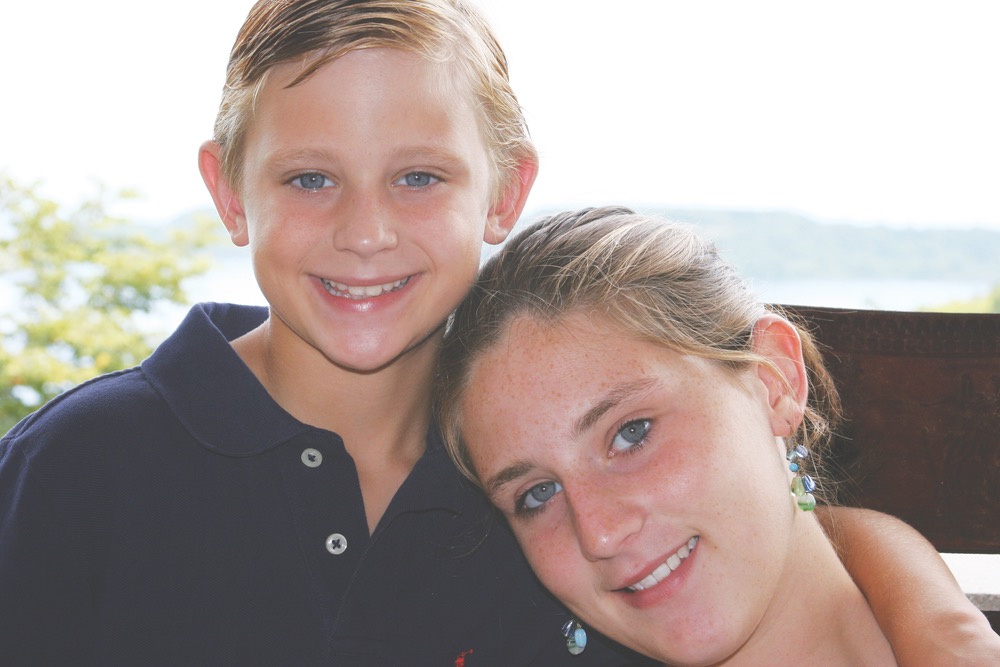
Dr. Moskowitz’s adoring children—Emma and Luke
Her exceptional skills in internal medicine, dermatology, and phlebology allow her to treat patients differently and, arguably, better than a physician without that essential combination. “People come to my office every day and say to me, ‘My legs ache and burn and swell at the end of the day’ or ‘I’m starting to feel old when I look in the mirror,’” she reports. “It’s extremely gratifying to know that I have the knowledge, experience, and technology to help them look and feel better about themselves. I love the diversity of my career; it’s a perfect gift, and I never take it for granted.”
Going the Extra Smile: Casi B. Stubbs, D.M.D.
BY laurie crowley | PHOTOGRAPHY BY ROMONA ROBBINS

Key Statistics
Location: 4633 East Hwy. 20, Niceville, FL 32578
Specialty: Orthodontics
Physicians: Casi B. Stubbs, D.M.D.
Growing a practice and staying connected to her patients is a goal and a reality for local orthodontist Dr. Casi B. Stubbs. Dedicated to her profession and her patients, Dr. Stubbs has opened a newly built state-of-the-art office at 4633 East Hwy. 20, Niceville, Florida. Having outgrown her previous office just a few miles down the road, Dr. Stubbs and staff couldn’t be more excited to share this new space with patients and their families. Working closely with local contractor Ron Brannon of Brannon Construction in Freeport, Fla., Dr. Stubbs and her husband, Zack, custom designed an environment that allows for efficient and comprehensive treatment in a seamless fashion. Utilizing the latest technology in the orthodontic industry, Dr. Stubbs is advancing and treating patients with confidence, providing healthy smiles along the Emerald Coast.
Since 2008, Dr. Stubbs has been treating both children and adults and has always insisted upon the highest standard of care for her patients. That means utilizing the most modern advances in the industry, such as invisible ceramic braces and Invisalign®, using the latest in computer technology (digital imaging and advanced computer graphics), and employing a staff of professionals dedicated to providing quality care in a warm, nurturing environment.
The New Office
“We are the same committed staff, only now in a custom-designed space,” says Dr. Stubbs. “That’s why I’m so excited to welcome patients to our new location. I’ve recognized certain areas that will make your orthodontic appointment more inviting.”
From the welcoming reception area, complete with a coffee station and computer space, to the gaming station for teens and the play corner for the little tykes, no detail has been left unattended. Dr. Stubbs recognizes that it is a privilege to treat her patients and is honored when they entrust her with their orthodontic care. “I never take for granted the faith my patients place in me and I work tirelessly to earn their respect.” This dedication is representative of the Christian ethic maintained in the office, where a monthly Bible verse is displayed prominently.
Dr. Stubbs realizes that every case is different and every patient has unique needs, which is why she often encourages parents to come into the exam room with their children to see what’s going on. “Having both the patient and family remain confident and comfortable in our care is of utmost importance,” says Stubbs.
About Dr. Casi Stubbs
Dr. Stubbs received her undergraduate degree in chemical science from Florida State University and her dental degree from the University of Florida College of Dentistry before attending Nova Southeastern University, where she completed her orthodontic specialty training. Committed to continuing education, Dr. Stubbs maintains memberships with the American Association of Orthodontists, the American Dental Association, the Florida Association of Orthodontists, the Florida Dental Association, and the Southern Association of Orthodontists.
I’m back home, doing the work I love, and watching my daughters thrive in this beautiful area.
A native of DeFuniak Springs, Florida, Dr. Stubbs is a graduate of Walton Senior High School. She returned home to the Emerald Coast to start her professional career. A wife and mother of two young daughters, Elle and Brycelyn, Dr. Stubbs is thrilled to be accepting patients at her newly built office in an area she holds so close to her heart. “I feel that life is coming full circle,” she says. “I’m back home, doing the work I love, and watching my daughters thrive in this beautiful area.” Inspired by her daughters and the breathtaking waters and awe-inspiring natural landscape of the area, Dr. Stubbs has written a children’s book, This Will Be and You Will See, which is featured in VIE’s Favorite Things for holiday shopping on page XX. For more information, visit drstubbsbooks.com.
For the past four and a half years, Dr. Stubbs and her experienced staff have been treating patients in the Bluewater Bay area, and this year they have opened a satellite office in the Destin Regatta Bay Business Center. Dr. Stubbs and her staff strive to connect with each patient, fostering a comforting relationship while creating a smile that exceeds expectations.
To learn about Dr. Stubbs’s office, please visit stubbsortho.com, or to talk with a member of the office staff or schedule an appointment, call 850-678-8338.
Dr. Amber Wiebe
BY sallie w. boyles | PHOTOGRAPHY BY life in focus llc
Key Statistics
Location: 4942 U.S. Hwy. 98, Suite 19, Santa Rosa Beach, FL 32459
Specialty: Dentist, cosmetic facial treatments
Physicians: Amber Wiebe, D.M.D.
Not so long ago, adults considered themselves lucky to have all of their teeth, regardless of their appearance, by the time they reached a certain age. At the mercy of genetics, accidents, neglect, illness, and aging, even the brightest smiles still lose their luster over time. Fortunately, some dentists continue to make great strides in preserving, restoring, and constructing smiles and faces in ways that transform how patients look and feel. Dr. Amber Wiebe encompasses that knowledge for both the smile, with smile makeovers, and the face, with facial treatments using BOTOX and facial fillers.
Modern dentistry is evolving rapidly, and Dr. Amber Wiebe, a Fellow of the American College of Dental Sciences who first opened her practice in 2000, is staying ahead of the curve. While Florida’s dentists must satisfy thirty-two hours of continuing education online every two years, Dr. Wiebe is finishing her two-year, six-hundred-hour comprehensive dentistry program mastership course, offered by University of Florida College of Dentistry. She is also proud to be a graduate of the prestigious Las Vegas Institute for Advanced Dental Studies (LVI), a world-renowned center for cosmetic and neuromuscular dentistry. Dr. Wiebe is further involved in a fellowship lecture series with an intensive examination requirement that will distinguish her as a Fellow in the Academy of General Dentistry (FAGD). “I am providing the most advanced information and options to my patients and they appreciate it,” says Dr. Wiebe, revealing that her postgraduate studies encompass hands-on training and lectures by renowned experts from around the world.
As an instructor in facial fillers and BOTOX, she enjoys traveling around the country monthly, teaching other dentists and medical doctors about cosmetic treatments with these transformative materials.
Dr. Wiebe uses the highest technology treatments to monitor the periodontal condition and decay in her patients’ mouths. One method Dr. Wiebe uses to diagnose the condition of a patient’s mouth is OralDNA testing, which uses a patient’s saliva sample to test for periodontal bacteria. Dr. Wiebe further employs the Diagnodent laser cavity detector to pinpoint cavities with 99.9 percent accuracy, as compared to the traditional dental explorer, which is 25 percent accurate. “The bacteria emit phosphorescence, which shows the precise depth of the cavity,” she says, explaining her enthusiasm for technology that delivers clear advantages to her patients. “When a patient asks which cavity is the worst, I can really tell them with scientific accuracy and I love it!”
Dr. Wiebe has also trained comprehensively when it comes to BOTOX and fillers and uses the cannula technique to reduce the chance of bruising on patients. She is highly skilled in BOTOX, Dysport, Restylane, Radiesse, Perlane, and Juvéderm cosmetic facial treatments. As an instructor in facial fillers and BOTOX, she enjoys traveling around the country monthly, teaching other dentists and medical doctors about cosmetic treatments with these transformative materials.
For those wondering about the place of wrinkle-minimizing treatments in dentistry, her advanced training places her in a unique position to help her patients look their best. “I am so attuned to how the face should look,” she says. “I constantly see every wrinkle and pore, and I know just what to do to eliminate frowns around the mouth, as well as wrinkles in the forehead, eyes, and neck. I enjoy reducing my patients’ wrinkles and giving them natural-looking, fuller cheeks and lips.”
Surprisingly to many, BOTOX can be used for multiple purposes, and popular treatment areas in Dr. Wiebe’s office include forehead wrinkles, elevens, crow’s-feet, lip wrinkles, and frowns. “BOTOX can also be used to reduce a high gum line without surgery,” Dr. Wiebe says, adding that it’s successful in TMJ therapy as well. “It is transformative for many of my TMJ patients who have had to wear a bite guard for years. When they get BOTOX from me, it is almost instant relief!”
In every case, she is thrilled to help her patients. “Many people come to me not even knowing what we can fix,” says Dr. Wiebe, who sees patients as young as two and well into their nineties. “We have so many ways we can help them; it is really exciting!”
A distinguished recipient of the President’s Volunteer Service Award signed by President Obama and recognized as one of America’s Top Dentists, she certainly demonstrates her commitment to serving others. For more information about Dr. Amber Wiebe and Santa Rosa Beach Dental, readers can visit amberwiebedds.com or call 850.267.0777.
— V —
Share This Story!
KEEP UP WITH THE LATEST STORIES FROM VIE



